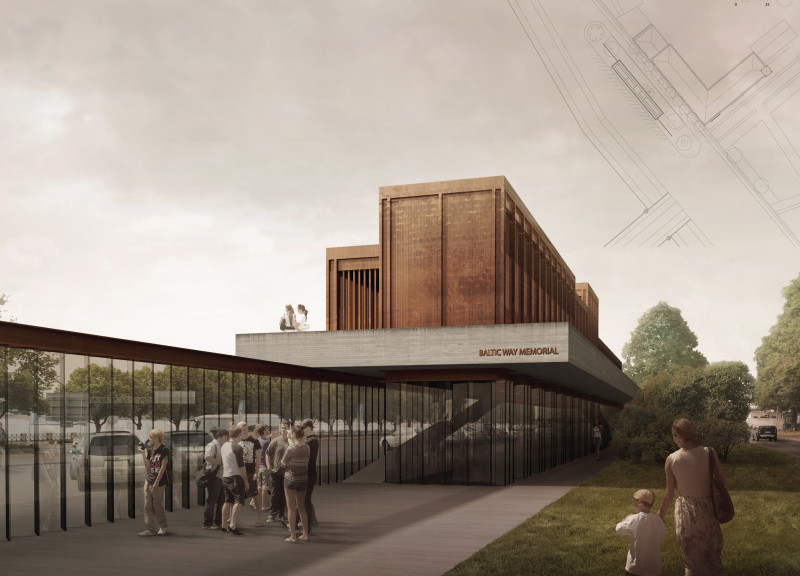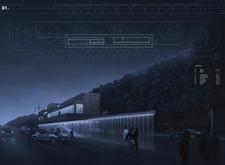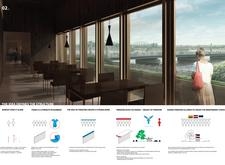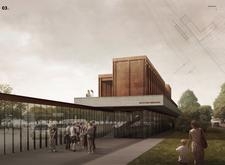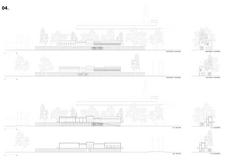5 key facts about this project
The overall function of the Baltic Way Memorial is multifaceted. It is a gathering place where visitors can contemplate the importance of freedom while connecting with the past and each other. The architectural design emphasizes inclusivity by providing diverse spaces for various activities—ranging from quiet reflection to community events. The project incorporates an entrance hall that welcomes visitors, leading them into various interactive areas, such as a dedicated space for educational materials and a café that encourages social connections among visitors.
Important parts of the memorial include an adaptable interior layout that accommodates both intimate gatherings and larger public events. The memorial features areas specifically designed for contemplation, allowing individuals to engage deeply with the historical narratives that the structure represents. The integration of outdoor spaces is another key element. These areas not only enhance the visitor experience but also provide a natural setting that encourages a connection with the surrounding environment, reinforcing the themes of freedom and nature's beauty.
The materials used in the construction of the Baltic Way Memorial play a significant role in the overall design. Wood, sourced locally, brings warmth and a sense of belonging, while extensive glass elements create transparency and invite natural light into the interior. This choice of materiality reflects a commitment to sustainability and respects the local context. Concrete forms a robust foundation, symbolizing resilience, while metal finishes add a contemporary touch, contributing to the memorial's visual appeal.
One of the unique design approaches of this project is its focus on creating spaces that encourage social interaction. The architects have integrated flexible areas that can be adapted for various uses, such as exhibitions or community events, allowing the memorial to serve as a dynamic cultural hub. The careful consideration of sightlines and visitor flow during the design process enhances the overall experience, fostering a sense of discovery as individuals navigate through the spaces.
The architectural language of the Baltic Way Memorial marries function and meaning, thoughtfully intertwining the past with present-day experiences. By using a combination of solid and transparent materials, the project creates visual intrigue while inviting engagement from the public. This approach not only attracts visitors but also reflects the memorial’s intent to celebrate freedom in a way that resonates on both personal and communal levels.
For those interested in deepening their understanding of the Baltic Way Memorial, exploring architectural plans, architectural sections, and architectural designs will provide further insights into the project's complexity and thoughtfulness. Engaging with these elements will enhance appreciation for the architectural ideas embedded within the memorial, encouraging a broader conversation about the relationship between architecture, remembrance, and community.


